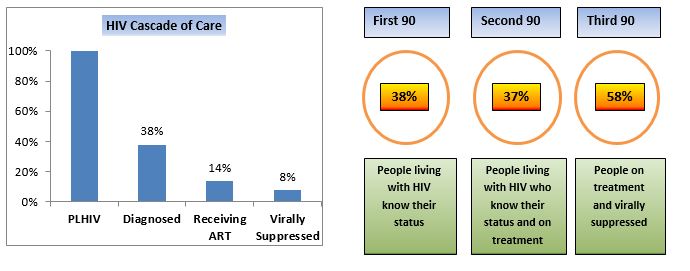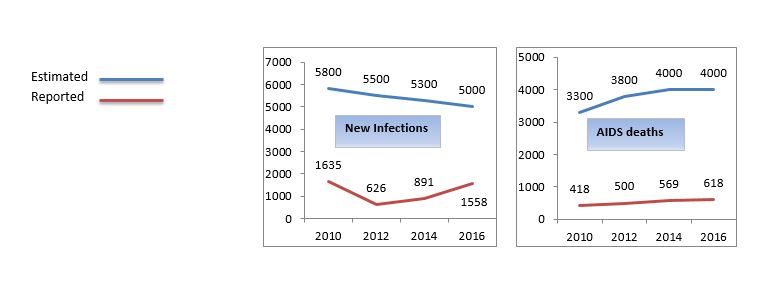Sociodemographic data
- Total population (in millions) : 80.0
- Maternal mortality per 100 000 live births :25
- Life expectancy at birth (years): 75
- Total fertility rate (births per woman) : 1.7
- GNI per capita, PPP (current international US$) :17 430
- Health expenditure, total (% of GDP) : 6.9
- Health expenditure per capita (current US$) : 351
- Human Development Index Value :0.77
HIV care cascade and progress towards 90-90-90

Epidemiological data (2016)
HIV estimates and case notification
|
|
|
HIV in specific populations
|
|
Survey data |
|
Size estimate |
Routine testing and VCT data |
|
|
Key populations |
|
|
|
No tested |
HIV+ cases (%) |
|
Sex workers (SW) |
2.1% |
|
90,000 (2015) |
1337 (2014) |
2.1% |
|
Men having sex with men (MSM) |
|
|
359,000 (2012) |
|
|
|
People who inject drugs (PWIDs) |
|
|
250,000 (2013) |
2,305 (2015) |
9.3% |
|
Prisoners |
|
|
217,851 (2013) |
14,949 (2016) |
0.4% |
|
Populations in health settings |
|
|
|
|
|
|
TB patients |
|
|
|
977 (2015) |
0% |
|
Pregnant women |
|
|
|
70,926 (2015) |
0.1% |
|
Blood donors |
|
|
|
2,071,031 (2015) |
.004% |
|
Clients of testing services |
|
|
|
|
|
Response
Policy implementation
|
|
|
|
|
Policy CD4 threshold adults and adolescents |
CD4 <=500 cells/mm3 |
|
|
Recommended initiation threshold children |
< 5 years (as per WHO 2013 guidelines) |
|
|
Policy of lifelong ART to pregnant & breastfeeding women |
Option B+ |
|
|
Implementation of lifelong ART to pregnant & breastfeeding women |
Done country-wide |
|
|
Implementation of national policy on viral load monitoring |
Not implemented |
|
HIV testing coverage in key populations *
Data not available.
Antiretroviral therapy and PMTCT coverage
References
1 http://www.prb.org/pdf16/prb-wpds2016-web-2016.pdf; (2) WHO.EMRO Regional Surveillance Data; (3) WHO/UNAIDS data spectrum 2016; (4) Global AIDS Monitoring (GAM) 2016.*These are approximate estimations based on the latest available data for number of people tested and size estimates.





